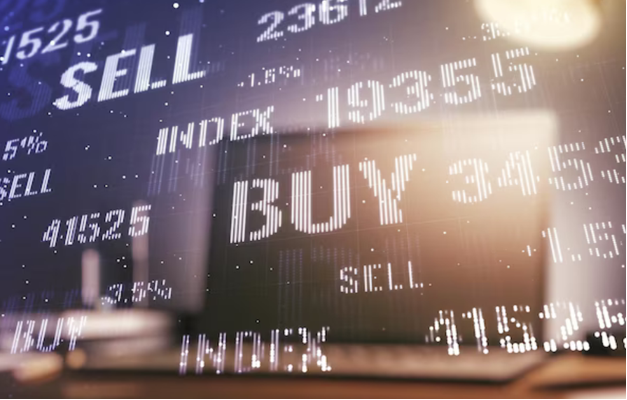Rolle im Portfolio
The Lyxor UCITS ETF SG Global Quality Income NTR Class D-EUR provides equity exposure to the highest dividend paying companies in America, Europe and Asia-Pacific.
The index this ETF tracks is broadly diversified across multiple countries and economic sectors, so this ETF is a suitable core equity holding. This fund may also suit investors looking to protect their portfolio from inflation’s effects. Empirical studies have shown that those companies that tend to pay out rising dividends generally provide goods and services that are able to keep pace with inflation. For example, utilities, energy and food companies find ways to pass on their input costs to consumers.
Because this fund’s benchmark index weights constituents by dividend yield rather than market capitalisation, investors will not necessarily find the largest and best known global companies among its top holdings. Additionally, the index contains smaller companies than one might normally expect in a broad based global market cap-weighted index.
Investors looking at this fund should be aware of potential value traps, however. A value trap occurs when a company’s dividend yield is high only because of its share price is low, reflecting the fact that the company may be in trouble.
This fund pays dividends on a semi-annual basis with a current yield of 3.4%, so it may be suitable for investors seeking income.
Fundamentale Analyse
While many investors chase capital gains, historically much of the total return from equities has come in the form of dividends.
In the wake of the financial crisis, value strategies grew in popularity as investors looked to shield themselves from market volatility. The current global low interest rate environment has only reinforced the shift as investors seek higher yields provided by dividend paying stocks. Depending on the market, dividends have historically accounted for 40% to 60% of the returns from investing in stocks. A policy of regularly paying out earnings can discipline corporate management and reduce the chance of unprofitable acquisitions.
During the financial crisis, many firms which were traditionally big dividend payers - in particular banks - cut payouts and saw their share prices fall as investors fled to safe-havens. However, cost-cutting exercises left many companies with significant cash reserves which are now being returned to investors, in some cases even topping pre-crisis dividend payout levels.
U.S. companies – the ETF’s largest geographical exposure – continue to hold vast amounts of cash on their balance sheets and are increasingly under pressure to do something with it. Indeed, it has started to flow back to investors. The S&P 500 reached a year-to-date average payout ratio of 32% in July 2014 - one of the highest levels in the last ten years.
In the current low yield environment, dividend stocks provide an alternative way to access various sectors with steady income. In particular, the utilities sector--representing 15-17% of the index’s value-- has historically produced strong, stable cash flows and dividends.
Indexkonstruktion
The SG Global Quality Income Index comprises 25 to 75 equally weighted stocks from a universe of stocks listed in North America, Europe and Asia-Pacific. The stocks cannot be financial companies and must have a free float-adjusted market capitalisation above $3 billion. From the eligible universe, to be included in the index, a security must fulfil three conditions. First, it must have a quality score (defined as the sum of 9 criteria based on profitability, leverage and operating efficiency of the issuer) of 7 or higher on the Pitroski scale of 9 quality factors. Second, its balance sheet risk score, measured by calculating a distance to default measure, must rank within the top 40% of the universe. Third, it must have an adjusted dividend yield greater than the highest value of either 4% or 125% of the market cap-weighted dividend yield of the universe. The index is rebalanced on a quarterly basis. The index is not very heavily concentrated, with the top 10 names accounting for 15-20% of the total weighting. Geographically, there is a tilt towards the US, with a 24-26% weighting, followed by Australia (16-18%), United Kingdom (14-16%) and Singapore (4-5%). Top sectors are utilities (30-35%), telecommunications (15-20%), and consumer discretionary (15-20%). As of this writing, the top positions are Imperial Tobacco, Telenor Asa, and Altria Group, all with weightings of 1-2%.
Fondskonstruktion
The fund uses synthetic replication to provide exposure to the underlying benchmark, entering an unfunded swap transaction with parent bank Societe Generale. The fund uses investors’ cash to buy a substitute basket of securities, the performance of which is exchanged for the performance of the index. Lyxor provides full transparency on the components of the substitute basket, which is made up mostly of European equities. The fund aims to maintain zero counterparty exposure by reviewing the marked-to-market value of the swap on a daily basis and resetting whenever its value becomes positive, i.e. when the counterparty owes money to the fund. At the time of writing, the substitute basket was valued at 102.00% of the net asset value of the fund. The fund’s holdings, which are monitored daily by Lyxor’s asset manager, are held in a segregated account at Lyxor’s custodian, Societe Generale Security Services. Under the terms of the swap, the counterparty agrees to provide the fund with exposure to the total return of the underlying index, net of any associated taxes, costs or fees.
Gebühren
The fund has an expense ratio (TER) of 0.45%, which is consistent with the few ETFs that track the same index but high relative to standard market-cap weighted ETFs providing exposure to global developed market equities. Other costs potentially borne by the unitholder but not included in the TER include swap fees, and bid-ask spreads and brokerage fees when buy and sell orders are placed for ETF shares.
Alternativen
There are only a few alternative ETFs providing exposure to global dividend stocks. Db X-trackers and iShares both offer funds tracking the STOXX Global Select Dividend 100 Index which includes exposure to financial services companies. The db X-trackers fund uses synthetic replication and charges a TER of 0.50% whereas the iShares fund uses full replication and charges a TER of 0.45%.
However, there is no shortage of ETFs providing standard market capitalisation weighted global equity exposure, though investors in these funds would not enjoy the potential benefits of a dividend-enhanced strategy. The index is comprised of around 1,500 stocks, heavily overweighting US equities (50-55% of the index’s value). On a sector level, financials are the biggest exposure representing 20-25% of the index.

















